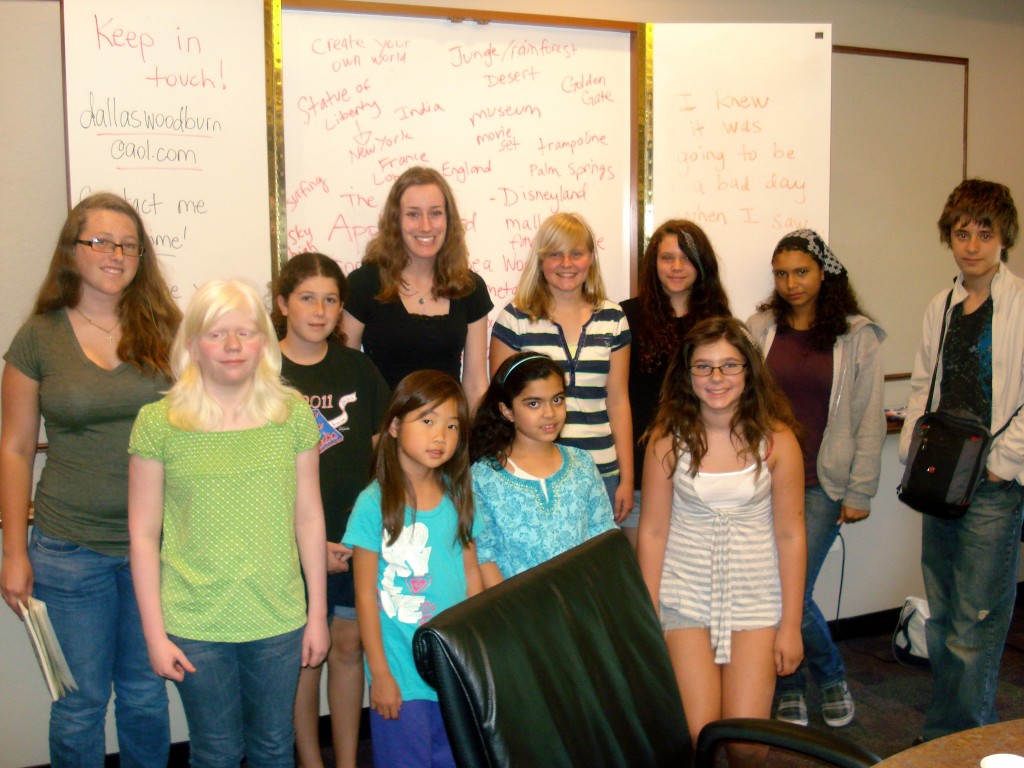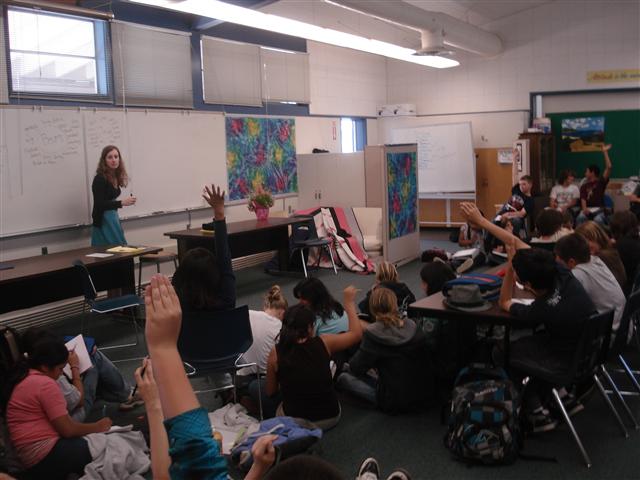Is there a specific way that people should teach the writing process, or are there different ways that can all be good to learn? If there are different ways, what are the best ways to teach it?
Great question! In my opinion, the most important part of teaching the writing process is to be aware of the individual student and what they struggle with. For example, some writers struggle with getting started; others struggle more with editing a completed first draft. So part of being a great writing teacher is helping guide the student through their individual struggles with writing.
Overall, I think it is important to allow students to have freedom in the writing process to be creative and to make mistakes — during first drafts, I tell my students not to “overthink” or be self-critical or worry about spelling/grammar mistakes. Those mistakes can always be corrected in the editing phase, and having your “editing” cap on when you’re trying to write a first draft can be very creatively stifling. I believe people write more and write better when they feel confident, are comfortable taking risks, and enjoy the writing process!
What tips do you give kids who are starting stories?
Don’t think too much — just write! Tap into your subconscious. Try to start with a BANG! — skip the “boring” stuff and start in the middle of things.
What tips do you give kids who are developing stories?
If you feel stuck, ask yourself, “What do my characters WANT?” There will likely be at least two characters whose desires are in conflict with each other… and conflict is what keeps plots moving forward.
What tips do you give ids who are trying to finish stories?
It will always be easier to start a fresh new story instead of finishing a story you’ve been working on for a while, but it is infinitely more satisfying to finish a story, so keep plugging away and don’t give up! If you’re trying to finish, don’t introduce any new problems for your characters. Rather, work on resolving the existing problems you have given your characters. Also, be aware that not every problem HAS to be resolved; not every loose end needs to be tied up. Some beautiful stories end with images, a resonant line, or a piece of dialogue that speaks to the overall theme of the story. It’s okay if your reader has some lingering questions, if not every single thing has been answered. In that way, stories are like real life — we don’t have all the answers, do we?
What are some exercises you give students not just to help them develop a story, but to strengthen them as writers?
- Give students a simple sentence (i.e. “The cat walked across the room”) and have them add adjectives, descriptions, details to make it shine and be memorable.
- Ask students questions about their main character and have them answer the questions as if they are the character. (It is helpful for them to write their answers down rather than just saying them out loud, so they can look back at what they wrote.)
- Have them brainstorm details/descriptions using all five senses and work these details into their story. Often writers use a lot of “sight” details but forget about the other senses!
I think the main thing is to be yourself. Kids blossom for authentic, kind, enthusiastic people. The best writing teachers I have studied under weren’t the best because they had all the answers — the most important thing was that they made me feel excited about writing, like I had something worthy and unique to say.
How is a younger student’s thought process or natural writing process different than an older student? (For example, a second-grader versus a sixth-grader?)
Younger kids often write simpler stories (A + B = C) and they usually can’t juggle as many factors in their minds — character-wise, plot-wise, etc. Thematically, their stories are often more black-and-white, with “good guys” and “bad guys” and less gray area. And that’s okay. These things develop with time.
I think it is important when teaching writing at any level to let the student write the story he or she wants to write, and not try to change it into the story you want it to be. You can guide them, but it is still THEIR story, and your job as a teacher is to make it the best version of THEIR story as it can be.
Does changing your writing curriculum every so often help with a kid’s creativity? If so, how often should you change it up, and how exactly does it help?
Yes, I think it helps — especially because not every kid will blossom with every activity. Some writers are better brain-stormers, others like more-structured activities, others like less-structured activities. So if you mix it up, it forces kids to try different types of writing and use their brains in new and different ways. I like to mix it up by using a variety of word-based writing prompts, image-based writing prompts, and music-based writing prompts.
Another thing you can do is have students tell a story in a different narrative order; for example, starting at the ending and working backwards to the beginning, or starting in the middle. Or, you could have them take a popular story and write it from a different character’s point of view. (Think: Wicked versus The Wizard of Oz.)
What is the best way to help students when they are stuck?
Sometimes simply having them talk through their ideas while you listen and tell them it’s a good idea is enough to get them un-stuck. I like to jot down notes as they are talking to me, so then I can give them a piece of paper that has all the ideas they were just telling me about. Then I can say, “Look at all these amazing ideas! Now go write these down into your story!”
Another helpful thing is to set a timer for seven minutes (I’ve found seven to be a good number — more than five, but less than ten) and tell them they have to keep writing SOMETHING for that entire period. Even if they think what they are writing is silly or stupid, they just have to keep writing. This is a trick I use when I am stuck myself; it’s a way to tap into your subconscious, which often helps you get unstuck.
How do I spark inspiration in kids?
I think your energy and enthusiasm will do a lot to make kids feel inspired. You want to set a tone of freedom to be creative and express imaginative ideas. You can also do things like bring in costumes for kids to “act out” characters, or magazines for them to cut out words or pictures that inspire them, or even a “magic writing wand” that you wave over all their heads before you start a writing session. Anything to make the vibe FUN and feel exciting and out-of-the-ordinary is wonderful.
How do I create assignments that will keep them entertained while also helping them learn a wide variety of tools and skills?
I think a great template is to have them read an example of a piece of writing that shows a concept you are trying to get across (i.e. realistic dialogue or vivid sensory details), discuss as a class why this piece is so effective and what is so great about it, and then give them time and space to practice that element of writing for themselves — making sure you are positive and encouraging, always always! And then afterwards give them time to share their work and give positive feedback to each other, and review again what everyone learned about writing through that activity.
Anything else I should know?
I think the main thing is to be yourself. Kids blossom for authentic, kind, enthusiastic people. The best writing teachers I have studied with weren’t the best because they had all the answers — the most important thing was that they made me feel excited about writing, like I had something unique and worthy to say.





